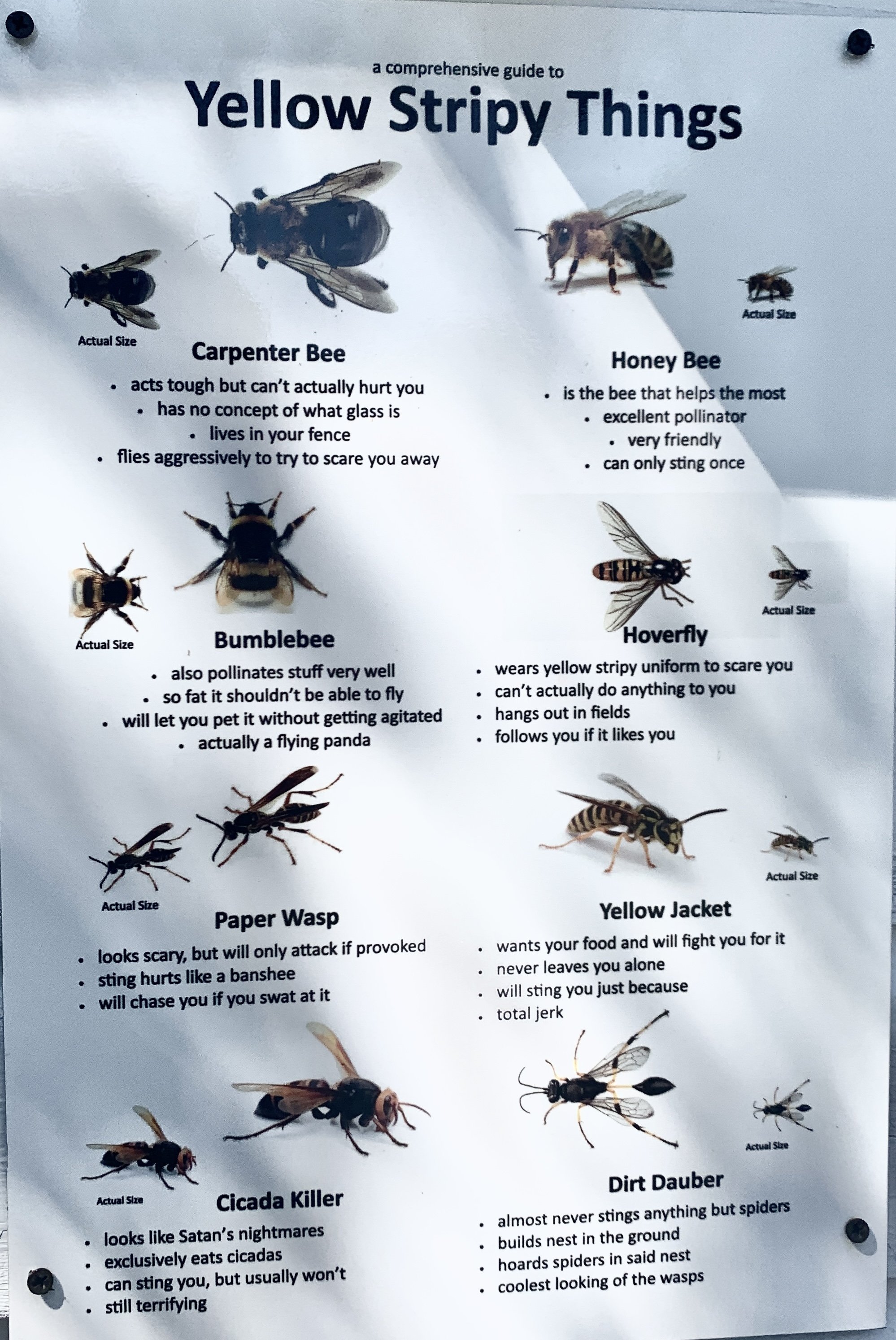Naturally
I was captivated by ditches filled with interesting things. The white umbels of Queen Anne’s lace (wild carrot or bird’s nest) looked like giant snowflakes of summer.
Dragonflies whizzed by. The insects have a corral filled with nicknames including snake doctor, devil’s darning needle and mosquito hawk.
I worked at a county fair and sat near a fountain dispensing cool water on a hot day. It had four bubblers coming from a straight pipe. Free water! There were two crows drinking the bubbling aqua. One crow was an adult and the other wasn’t.
I had been on a spring’s roads and was staying in a hotel. Across the street were stores of every kind. I wanted to get a large bottle of iced tea to put in my room’s refrigerator. I’d decided to walk to the store and wondered aloud, “But which store should I go to?” A chickadee whistled, “Hy-Vee.” The black-capped chickadee’s song is a simple two-note whistled “fee-bee.”
Erica McAlister, a curator of Diptera (flies) at the Museum of Natural History in London, reported there are an estimated 17 million flies per person. I don’t know who counted them.
A caller sent a photo asking if a lovely beetle was a Japanese beetle. The sides of a Japanese beetle’s abdomen are adorned with five patches of white hairs and the tip has two patches. Robber flies and assassin bugs prey on Japanese beetles, which feed on about 300 species of plants—devouring leaves, flowers and fruit. The metallic-hued beetle in the photo was a dogbane leaf beetle, which has a green head and copper, gold and emerald elytra (wing cases). Its green legs have a metallic gleam and it has longer antennae than Japanese beetles. Dogbane leaf beetles mate, feed and grow on dogbane plants.
I watched a greater roadrunner in Texas. No beep, beep or meep, meep. The male makes a cooing sound. It’s sometimes called el paisano or chaparral bird. An opportunistic predator, it feeds upon snakes, lizards, scorpions, snails, spiders, insects, rodents, bats and birds.
I spoke at the lovely Merrick State Park along the backwaters of the Mississippi River near Fountain City, Wisconsin, when a brown thrasher, a one-bird band, joined me. It’s nicknamed Mavis. I called out that name and it flew away.
Q&A
Denny Tostenson of Albert Lea had no Baltimore orioles this summer. I suggested he dress like Oriole Bird, the mascot of the Baltimore Orioles MLB team. Denny saw one owl chasing another owl in his July yard and wondered what was going on. Great horned owls begin nesting in January or February. They lay their eggs in abandoned nests of squirrels, hawks or crows or in hollow trees. The one to five eggs hatch in 30 to 37 days. The young owls leave the nest in six to nine weeks. Juveniles are dependent on their parents through the summer, and sometimes don’t leave their parents' territory until forced to do so in late fall. Barred owls begin nesting in March with the two or three eggs hatching in 28 to 33 days. Young barred owls leave the nest four to five weeks after hatching. At about eight weeks old they begin to fly, but don’t master flight until they are 12 weeks old. Young owls stay with their parents until the end of summer or sometimes later, before taking off on their own. Barred owl parents feed their chicks for up to four to five months of age, at which point the young start dispersing. What Denny saw was likely a young owl hoping to be fed by its parent.
“What is blue-green algae?” Blue-green algae are bacteria, actually cyanobacteria—cyan means "blue-green"—and are commonly found on lakes, rivers and ponds. A combination of warm temperatures, sunlight and nutrient-rich waters can cause blue-green algae to reproduce rapidly (bloom). It often looks like green paint or pea soup floating on the water, but can also appear bluish, brownish or reddish-green. Some blue-green algae produce toxins or poisons. In their toxic forms, blue-green algae can cause illness in humans, pets, waterfowl and other animals that come in contact with the algae.
Ask Al, the Frivolity Department
“What is the purpose of raccoons?” The animals let us know when the sweet corn is ripe.
“I saw a tern being shadowed by another tern. Whatever one did, the other did likewise. What were they doing?” One was a tern and the other was an intern gaining valuable work experience.
“Why do vultures fly in circles?” They’re buffering.
“How do you catch a skunk with your bare hands?” Only once.
Thanks for stopping by
“If you love it enough, anything will talk to you.”—George Washington Carver.
“Religions are many and diverse, but reason and goodness are one.”—Elbert Hubbard.
Do good.
©Al Batt 2022
The dogbane leaf beetle, an incredibly beautiful insect, feeds mainly on dogbane, but occasionally eats milkweed. It’s a gorgeous beetle, the sight of which thrills me. Photo by Al Batt
I really enjoyed this children’s book
A friend made this out of a bucket of junk. Freeborn County Fair.
I volunteered at the Freeborn County Historical Society Village near this bee house. It not be my house.
I got a laugh out of the description of the cicada killer.
Hope on a Butterfly Weed.








